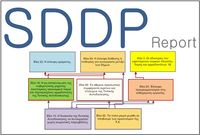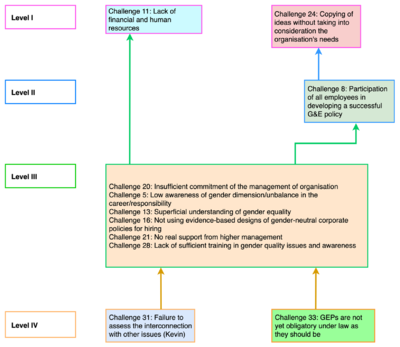Future Finance Poland SDD 2022
|
Executive Summary
The Workshop ..... in the context of
- 16/12/2021 (30 min) Preparatory for introductions and explaining the process
- 13/1/2022 (2 hrs) Collection and Clarification of contributions
- 20/1/2022 (2 hrs) Clustering
- 27/1/2022 (2 hrs) Structuring and Road Mapping
Yiannis Laouris served as Lead Facilitator. Kevin Dye joined in the physical event in Poland as Co-Facilitator.
The workshop, which was realised using the participatory methodology of the Structured Democratic Dialogue, brought together XX experts from the .
Triggering Question (TQ) of the workshop
What short-term, measurable actions can we take as part of the Future Finance Poland initiative to bring Poland into the top 30 of the GFCI ranking in the next 2-3 years?
Jakie krótkoterminowe, wymierne działania możemy podjąć w ramach inicjatywy Future Finance Poland, aby Polska znalazła się w czołowej trzydziestce rankingu GFCI w ciągu najbliższych 2-3 lat?
In response to the TQ, the participants came up with 38 factors.
Clustering Voting Structuring
- Cluster: Public Policy
- Cluster: Promotion
- Cluster: Strategy & Value Proposition
- Cluster: Market Awareness
- Cluster: Infrastructure
- Cluster: Coordination
- Cluster: Unnamed
Following the voting process, twenty nine (29) factors received one or more votes, which translates to a percentage to 72% ST.
The participants structured 10 factors using the computer-assisted approach.
At the end of an about 90 min-long mapping session, the participants managed to structure all actions that had received 3 or more votes. The influence relations between those ten actions are shown in the Figure below.
The obvious characteristic of the MAP is that it features two pathways, but both pass through Action #17: Building Future Finance Poland Lighthouse. Examining the root of the MAP, we observe that Action 37: Map all available research and analytical resources and ongoing operations supports only the left pathway; i.e., through Action: 8: Partnerships with other Financial Centers throughout the world, it supports Action:17, which in turn supports all actions lying above it. On the contrary, Action #36: Business service centers as part of a successful FFP structure, supports both the left and the right pathways.
The most striking characteristic of this MAP is that Action 17 appears to be an instrumental, intermediary step that provides support for the implementation of the actions that lie at the top of the MAP. Typically, the top of the tree structure is populated with ideas that pinpoint towards ultimate goals of a strategy; i.e., they are more visionary. In this case, we have:
- Action: #29: Market-wide technological ecosystem for creating and testing financial innovation
- Action: #12: More recognized and better picture of Poland in international markets
- Action: # 2: Promotion campaign on business centers in Poland
Following the 90-min formal structuring session, the facilitators have asked the authors of the actions that have received 3 or 2 votes to take the printouts of their ideas from the wall, to go and stand in front of the MAP that has been reconstructed at another place in the room, and discuss with the rest of the group whether that particular action can be placed at some location within the existing structure.
Subsequently, they formed a group standing in front of the re-cteated map in a wall and structured a total of 19 to create the influence MAP shown below.
According to the participants of this workshop, the practices that appear to be the most influential were:
- 31: Failure to assess the interconnection with other issues
- 33: GEPs are not yet obligatory under law (as they should have probably mean)
As demonstrated in the following Figure, the Influence Map of the virtual Structured Democratic Dialogue workshop includes four different hierarchical levels. The strongest obstacles are considered the root, which also pinpoint to possible drivers for change, i.e., removing them will be most effective. The implementation of these ideas should be prioritised in order to facilitate the implementation of the subsequent practices. These root obstacles are located at the bottom of the roadmap and in particular at the Levels II and to a lesser extend II, as they have the greatest influence among all other practices. It also follows that the practices identified on the upper levels of the Map are the least influential in facilitating the implementation of other practices. The influence of one obstacle over the other is completely unrelated to the importance of the two obstacles emerging from the voting phase that preceded. In this vein, any obstacle which has received more than two votes during the voting phase, and was thus moved to the Mapping phase, can be considered a root practice regardless of the number of votes it received. Therefore, an obstacle with “low popularity” can end up being a root barrier while an obstacle with “high popularity” can end up at the upper levels of the map. For instance, consider Ideas 24: Copying of ideas without taking into consideration organization's needs (Nafsika); 8: Participation of all employees in developing a successful G&E policy (Kriemadis); and 20: Insufficient commitment of the management of the organisation (Vicky), all of which have received top votes but did not make it to the root.

